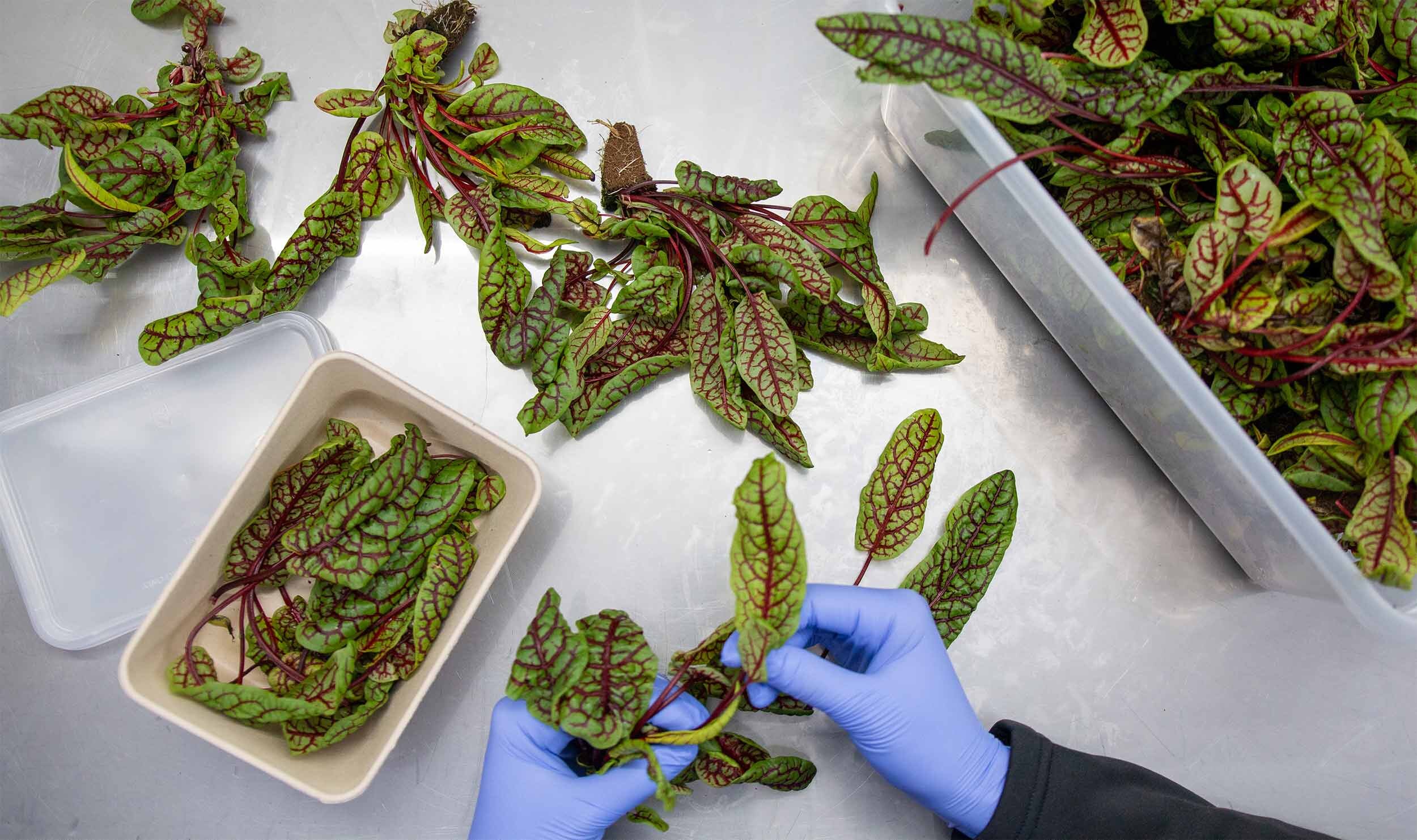Growing independence–how container farms can help islands become self-sufficient
Your island is the perfect place for a container farm.
Container farming can create a resilient and sustainable local food system.
One of the most pressing issues island communities face is a lack of local food production due to space, climate, and weather restrictions. As a result, many island communities rely on imported food that degrades the local culture and increases the amount of unhealthy food products on the market. A reliance on imports also creates instability for regions that will likely be the most affected by climate change in the years to come.
4 common limitations to island food production
1. Limited space
One of the greatest limitations to island food production is simply the lack of space! Many islands or archipelagos are tiny, with not enough land available to hold residents, tourists and visitors, the necessary infrastructure, and productive farmland.
Three examples of tiny islands
The Marshall Islands in the Pacific Ocean (69.8 sq. mi/ 181 sq. km.)
The Maldives in the Indian Ocean (115 sq. mi./298 sq. km.)
Malta in the Mediterranean Sea (122 sq. mi./ 316 sq. km.)
To compare just how small these islands are, the tiny state of Rhode Island in the U.S. is 1,212 sq. mi, or 3,139 sq. km!
2. High population density
Another largely limiting factor aside from size is population density. While an island can be large enough to host farmland, the space is not necessarily available, or even large enough, to support the dense local populations.
Islands with the highest population density (Source: World Bank, 2016)
Singapore: 20,169 people/ sq. mi. (7,788 people/ sq. km.)
Bahrain: 4,822 people/ sq. mi. (1,863 people/ sq. km.)
Malta: 3,581 people/ sq. mi (1,383 people/ sq. km.)
3. Unsupportive climates
While we usually think about islands located in the warmer regions of our planet, some of the largest islands–like Iceland, Greenland, and parts of Canada–have very cold climates. This doubles the pressures of importing food, as there’s a large part of the year where nothing can grow!
Unfortunately, tropical islands also have problems with growing food locally. The hot and humid environments are breeding grounds for destructive plant pests and diseases that have only become more aggressive with climate change.
4. Changing environment and natural disasters
Speaking of climate change, many island nations near the equator are extremely vulnerable to worsening climate and weather patterns (Madagascar, Malaysia, and Indonesia are amongst the most vulnerable). The United Nations Framework Convention on Climate Change (UNFCCC) also identified Haiti, Fiji, the Dominican Republic, St. Vincent and the Grenadines, and the Bahamas as the most affected by climate change in 2016, with millions of dollars lost in infrastructure due to natural disasters (major cyclones, hurricanes, storm surges, and flooding).
Puerto Rico is a grim example of the vulnerability of islands in the face of natural disasters made more common by global climate change. In the aftermath of Hurricane Maria in September 2017, Puerto Rico not only suffered from destroyed infrastructure, but also lost 80% of the island’s crops and $780 million in agricultural yields. It could take years for farmers to recover as the island struggles to rebuild even the most basic infrastructure.
Serious repercussions to island life
As a result of these limiting factors–space, population, climate, and weather–many islands rely on food imports. Unfortunately, this causes a lot of stress on island food systems as communities have abandoned their local production in favor of importing. This creates a negative food trade balance and high dependency. Climate change and natural disasters have only made the problem worse as local options become less and less dependable.
Hawaii endures the stresses of an import-based food system. With a booming tourism industry, Hawaii imports 6 million pounds of food by ship to feed the 1.4 million residents and 8 million annual visitors (this doesn’t even include perishables that are delivered by airplane!). As the world’s most isolated island chain, Hawaii imports almost 90% of its food for $3 billion a year. This dependence on imports is highly vulnerable: if Hawaii is subjected to any severe weather, food stores would last less than a week and leave residents and visitors stranded without access to food.
A side-effect of the high import island food systems has also been a rise in diet-related health issues in many island nations. With the majority of imported foods being highly processed packaged goods, island communities are seeing drastic increases in obesity rates. In fact, nine of the most obese territories in the world–American Samoa, Nauru, the Cook Islands, Tokelau, Tonga, Samoa, Palau, Kiribati, and the Marshall Islands– are all islands located in the South Pacific. Sadly, this is also tied to a decrease in the industries and diets that have been part of islands’ identities for centuries. As fishing and local food production decreases, much of the rich food culture is being replaced with an imported Western diet.
Hydroponic container farming as a solution
Small footprint
We built the Greenery S for people looking to grow with limited space. At just 320 square feet, the container farm uses vertical hydroponic growing technology to grow food on a commercial scale. Small space agriculture practices such as these create dense growing spaces that can support entire communities with fresh produce year-round. Furthermore, the farm’s modular design (and past life as a freight container) means that they’re easily stackable to get even more food per square foot.
Protection from the elements
The Greenery S also creates a fully climate controlled and protected environment for plants to grow. Thanks to farmhand® technology, every component in the farm is automated, with the farmer able to monitor and control the farm remotely. This means full control over water and nutrient dosing, light exposure, indoor temperature and humidity, and CO2 levels. Not only does this create a consistent climate regardless of high or low outdoor temperatures, but it also keeps plants protected during droughts, storms, or floods. The 8-ton container was built to withstand all types of extreme weather on the high seas, and is equally impenetrable on land. One of our existing farmers in Houston, Texas, was able to keep his crops safe during Hurricane Harvey in 2017, which was the “the most significant tropical cyclone rainfall event in United States history,” after which he was one of the only local suppliers still operating in the area.
Healthy food options
The Greenery S is optimized to grow leafy greens (along with lettuces, herbs, flowers, and root vegetables). These crops are cornerstones to a healthy diet: They’re high in vital vitamins and minerals and low in calories. Additionally, thanks to the container farm’s climate control, it is possible to introduce nutritionally rich crops such as kale or a variety of lettuces–typically colder weather crops–to tropical regions or, vice versa, bring warm weather crops like arugula and basil to cold regions.
Local flavors
Here at Freight Farms, we see monocultures as destructive to not only the land, but many rich food traditions that exist around the world. The Greenery S is a way to promote culturally-diverse plants to be grown and used in local cooking as a means of staving off the effects of a Western diet on local cuisine.
Meet some existing island farmers!
See how a container farm can help your community.
Contact us for more information about the Greenery S.





















